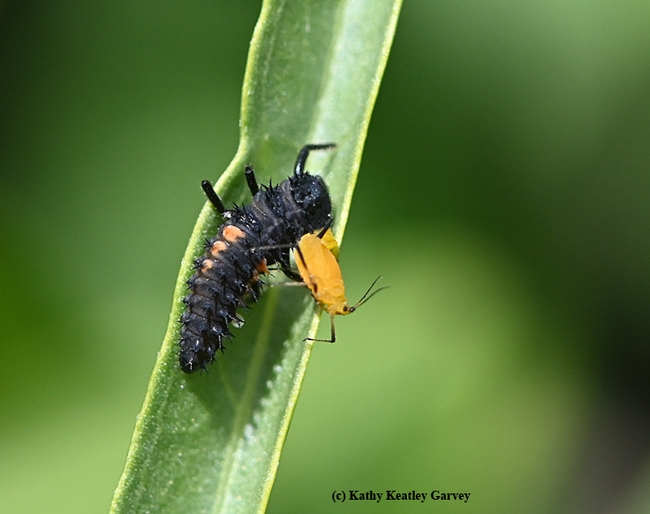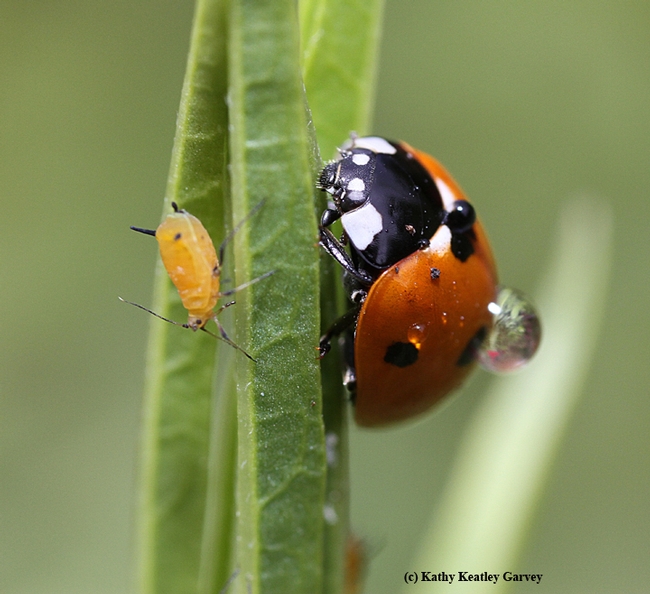Have you ever seen the larva of a lady beetle (aka ladybug) dining on an aphid?
Lights! Camera! Action!
So here is this charming little immature lady beetle chowing down on an oleander aphid that has the audacity to infest the milkweed in our pollinator garden. Chomp! Crunch! Slurp! And then another aphid arrives on the scene. It does not flee. Aphids are not the smartest of insects.
Can you just wait! Hold on! I'm not finished eating this one, yet!
And then an adult lady beetle arrives. She ignores a fat aphid right before her very eyes. Shall we prey?
Can you just wait! Don't go away! I'll eat you when I'm hungry!
A lady beetle (it's not a bug, it's a beetle!) belongs to the family Coccinellidae. Scientists have described about 5000 species worldwide, and about 450 in North America.
The Lost Ladybug Project encourages you to monitor ladybugs and upload photos of them. They also provide good identification tools and photos of the beetles. Hint: not all lady beetles are spotted.
How many aphids can a lady beetle eat in her lifetime of three to six weeks? An estimated 5000 aphids, according to the University of Kentucky Cooperative Extension Service.
That's great pest control!
One thing is for sure: the lady beetles and their offspring patrolling our milkweed plants will never experience famine. This is an all-you-can-eat buffet, and the aphids just keep on a'coming. They do not flee. Aphids are not the smartest of insects.
Now, where are the monarchs? We have milkweed waiting.
Attached Images:

